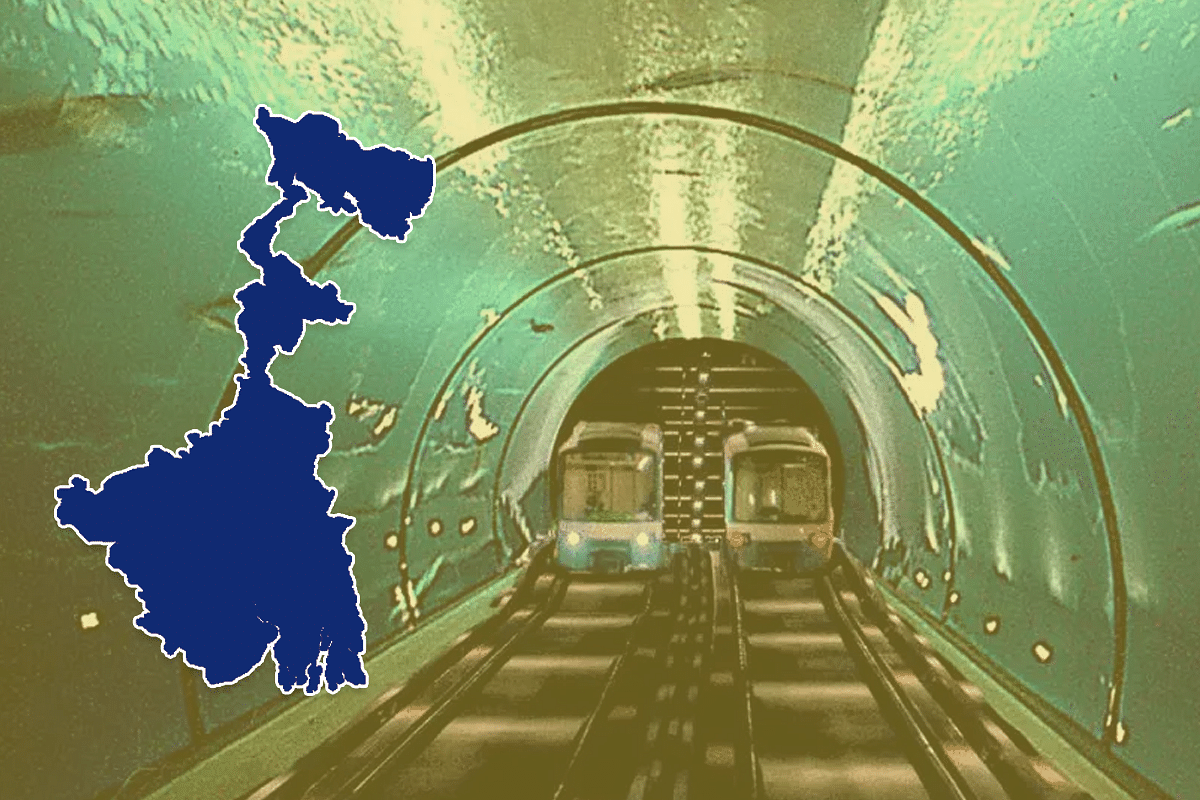Infrastructure
Kolkata: India’s First Underwater Metro Rail Service Below Hooghly River, To Start By June Next Year
- This underwater train tunnel will be the second in Asia after the 23.3-km-long Seikan Tunnel of Japan.
- The Underwater Metro Rail will take commuters from BBD Bagh to Howrah Maidan in just a few minutes, reducing the travel time significantly.

Underwater Metro ( Representative Image)
Kolkata Metro, the country’s first Metro Rail service, is set to achieve another first in six months’ time by running under the Hooghly river.
Trial runs on the Esplanade to Howrah section of the East-West corridor of Kolkata Metro Rail Corporation (KMRC) will start by March next year. This section includes a 520-metre underwater stretch below the Hooghly.
A top KMRC officer told Swarajya that this 4.8 km stretch between Esplanade and Howrah Maidan is nearly ready.
“Some finishing touches are being applied now and everything will be ready by February-end. Trial runs will start after that. We plan to commission this stretch and start services by June next year,” he said.
This underwater train tunnel will be the second in Asia after the 23.3-km-long Seikan Tunnel that connects Japan’s Honshu and Hokkaido islands.
Another underwater tunnel — a 21-km stretch under the Arabian Sea — will be constructed as part of the Ahmedabad to Mumbai high-speed rail project. Bids have been invited for that project.
The Metro Rail twin tunnels under the Hooghly — a distributary of the Ganges — were ready in 2018 while the ventilation shafts were operational in 2020. The three stations between Mahakaran (BBD Bagh in Kolkata’s central business district) and Howrah Maidan were also ready by the end of last year.
The entire 16.6-km-long East-West Metro Corridor between Salt Lake Sector V — the electronics and Information Technology (IT) hub in East Kolkata — and Howrah (Kolkata’s twin city on the western bank of the Hooghly) was to have been ready by October this year.
Trial runs on the entire stretch — 5.8 km along elevated tracks and the remaining 10.8 km underground — was to have started by last month.
But two soil subsidences at Bazar in central Kolkata in August 2019 and May this year resulted in long delays. The east-bound tunnel along the entire underground stretch is ready, save for some minor patches reserved for building cross-passages (between the parallel tracks) in the Sealdah to Esplanade section.
The west-bound tunnel is still incomplete in a few stretches between Sealdah and Esplanade because of the subsidence.
The tunnel boring machine (TBM) that was burrowing the west-bound tunnel hit an aquifer in Bowbazar on 31 August 2019. On 11 May this year, another subsidence happened in the same area, while work was on to bridge a 38-metre gap caused by the earlier subsidence.
In October this year, work was suspended once again after a few old residential buildings in the area developed cracks and became unstable during construction of one cross-passage.
More than 190 people living in 12 buildings had to be evacuated. All this has resulted in long delays, and consequent cost and time overruns.
However, the KMRC is hoping to complete the west-bound tunnel by the middle of next year and start trial runs between Sealdah and Esplanade sections soon after that.
A 9.4 km stretch of the East-West Metro between Salt Lake Sector V and Sealdah is already operational and ferries thousands of passengers daily.
The preparation for the trial runs between Esplanade and Howrah scheduled for March next year will also pose a major logistical challenge to the KMRC.
That’s because the two rakes required for the trial runs will have to be brought from the KMRC’s depot at Salt Lake’s Central Park. The rakes will be brought through the east-bound tunnel to Sealdah.
“Negotiating the stretch between Sealdah and Esplanade will be a major challenge since there are short discontinuities (gaps) for cross-passages (between the two parallel tunnels) in the east-bound underground track. The rakes will have to be slid over these gaps,” said the senior KMRC officer.
It takes more than 20 minutes to travel between Howrah Maidan and BBD Bagh through the iconic Howrah Bridge now. This travel time can stretch to over 45 minutes during the frequent traffic jams that clog the congested route during rush hours.
The Metro Rail will take commuters from BBD Bagh (Mahakaran station) to Howrah Maidan in just a few minutes.
Support Swarajya's 50 Ground Reports Project & Sponsor A Story
Every general election Swarajya does a 50 ground reports project.
Aimed only at serious readers and those who appreciate the nuances of political undercurrents, the project provides a sense of India's electoral landscape. As you know, these reports are produced after considerable investment of travel, time and effort on the ground.
This time too we've kicked off the project in style and have covered over 30 constituencies already. If you're someone who appreciates such work and have enjoyed our coverage please consider sponsoring a ground report for just Rs 2999 to Rs 19,999 - it goes a long way in helping us produce more quality reportage.
You can also back this project by becoming a subscriber for as little as Rs 999 - so do click on this links and choose a plan that suits you and back us.
Click below to contribute.
Latest